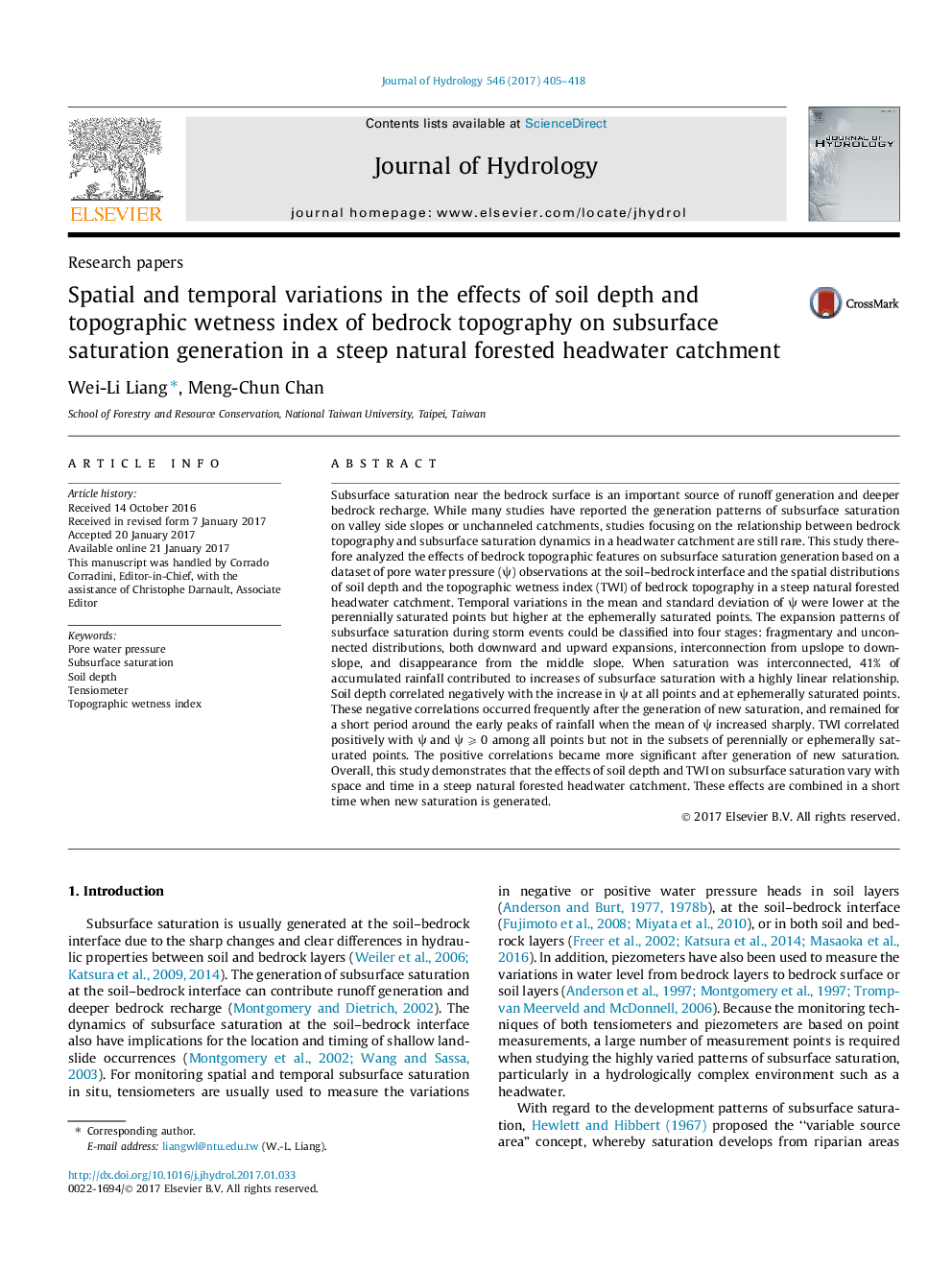| کد مقاله | کد نشریه | سال انتشار | مقاله انگلیسی | نسخه تمام متن |
|---|---|---|---|---|
| 5771307 | 1629908 | 2017 | 14 صفحه PDF | دانلود رایگان |

- Subsurface saturation monitoring with a high resolution in space and time.
- Hydrological responses differed at perennially and ephemerally saturated points.
- 41% of accumulated rainfall contributed to increases in the amount of saturation.
- The effects of soil depth and TWI on subsurface saturation varied temporally.
- The effects of soil depth and TWI were notable after new saturation was generated.
Subsurface saturation near the bedrock surface is an important source of runoff generation and deeper bedrock recharge. While many studies have reported the generation patterns of subsurface saturation on valley side slopes or unchanneled catchments, studies focusing on the relationship between bedrock topography and subsurface saturation dynamics in a headwater catchment are still rare. This study therefore analyzed the effects of bedrock topographic features on subsurface saturation generation based on a dataset of pore water pressure (Ï) observations at the soil-bedrock interface and the spatial distributions of soil depth and the topographic wetness index (TWI) of bedrock topography in a steep natural forested headwater catchment. Temporal variations in the mean and standard deviation of Ï were lower at the perennially saturated points but higher at the ephemerally saturated points. The expansion patterns of subsurface saturation during storm events could be classified into four stages: fragmentary and unconnected distributions, both downward and upward expansions, interconnection from upslope to downslope, and disappearance from the middle slope. When saturation was interconnected, 41% of accumulated rainfall contributed to increases of subsurface saturation with a highly linear relationship. Soil depth correlated negatively with the increase in Ï at all points and at ephemerally saturated points. These negative correlations occurred frequently after the generation of new saturation, and remained for a short period around the early peaks of rainfall when the mean of Ï increased sharply. TWI correlated positively with Ï and Ï ⩾ 0 among all points but not in the subsets of perennially or ephemerally saturated points. The positive correlations became more significant after generation of new saturation. Overall, this study demonstrates that the effects of soil depth and TWI on subsurface saturation vary with space and time in a steep natural forested headwater catchment. These effects are combined in a short time when new saturation is generated.
Journal: Journal of Hydrology - Volume 546, March 2017, Pages 405-418